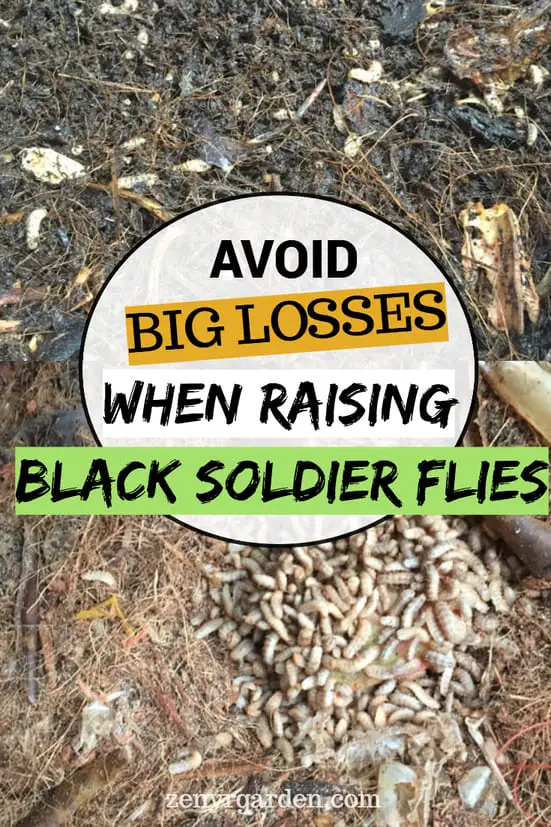Here are some possible losses I notice when raising BSF:
From the start, being overzealous may overwhelm the beginning farmers and makes them demotivated when things don't seem to go the way we'd love them to.
This means, getting the eggs but haven't yet prepared the space or food for them. 10 grams of BSF seem like a very small amount. But it is really a lot of larvae inside. I knew roughly in my head when I first bought egg that it's going to be quite a lot, but I couldn't yet imagine it would be that much.
For 10 grams, roughly that's about 400 000 larvae inside. And for comfortable raising, 2-3 meter square would be good for them. That means, if you get 10 grams prepare 3 meter square space or containers for them. If you get 100 grams, imagine how you'd go from there. The sweet thing is, if all goes well, from the initial 10 grams, you may expect to get about 30 kg of larvae in return.
But then, at the start if it's too crowded in a small space, the heat will raise up real soon. And you don't want your larvae escaping when they are 3-5 days old. It's nothing wrong for them, but you won't be able to see the larvae easily at such tiny size to catch them back. Unless you really pop your eye out and curl your back like a shrimp to find and catch back each one.
Trust me, you don't want to get into this situation. When my baby larvae escaped, I crawled around and handpicked every single one as many as I could see back into the bin. Like a big human BSF larvae. It took hours. I knew then we have a heat problem. That's when we needed to change things. For you at this point, this could be a big loss if you're raising a lot and don't have the time or energy to catch them all back. So avoid such thing from the beginning to conserve the amount.
Secondly, the food you give them. The thickness of the food may cause the heat issue. So feed them food by spreading out thinner. If you notice any watery fruits/foods that may turn runny after some time, sprinkle a dry layer of cocopeat or chick feed at the bottom. This helps the bottom not turn too wet, which could make the larvae leave their home.
When the larvae eat meat or veggies, they will generate a lot of heat. When you place your hand near the feed, you'll feel the heat. Over 40C (104F) as I notice. If you're raising them outdoors, feed them then at a time when it's less hot. The feeding heat + ambient heat may make it uncomfortable for them. They'll sweat!
And when you have the bottom layer of cocopeat or something dry, it also makes it much easier to clean the containers after they're done eating. Be mindful that you may run of out food to feed them.
These guys are easy eaters but they eat a lot. They won't die with not enough foods, however they just get smaller and won't pupate soon. I have some 12-day-old that look like they are 7-8 days old. If you're doing this on a larger business scale, take into account the feed and feed costs. By keeping the temp & humidity nice and cool inside will help make for stronger, more healthy flies.
Lastly, don't let ants steal your baby larvae! They love to eat BSF larvae (and houseflies larvae) from what I've seen. I've lost some babies, big and small, to them unfortunately. With an ant sting, the larvae may turn stiff. To keep ants away is actually very easy. Sprinkle some kerosene or black oil around the raising area. Within minutes, the ants will disappear.
Happy BSF raising!
Share or pin this post!

Cover photo by: Zenyrgarden

